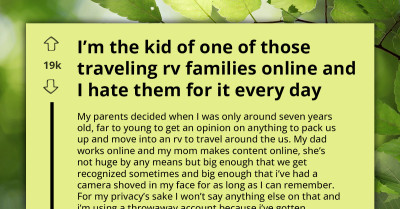
10 Boys Vs. 10 Girls Left Unsupervised For A Week—Startling Behavioral Differences Noticed
What could possibly go wrong?

In the early 2000s, television introduced various unconventional social experiments, some surprisingly pushing boundaries. One of these experiments was Channel 4's "Boys and Girls Alone."
The idea was simple: Place children in a house without adult supervision and see what unfolds over five days. This experiment, conducted in 2002, was fascinating and controversial because it highlighted children's behavior when left to their devices.
The documentary took 20 children, split into groups of boys and girls aged between 11 and 12, and placed them in a large, comfortable house in the English countryside. The house had toys, books, games, and a well-stocked kitchen.
The children had access to ingredients for both healthy meals and junk food. The two groups – first the boys and then the girls – lived separately, and the results were strikingly different.
When the boys were left alone, things quickly spiraled out of control. They formed cliques and began destroying the house without structured guidance or discipline.
Their diet consisted mainly of sugary drinks and snacks, leading to poor nutrition and erratic behavior. At one point, a boy named Michael was even tied to a chair by the others in what seemed like a playful act but was alarming to observers.
This descent into chaos resembled the fictional world of "Lord of the Flies," where a group of unsupervised boys turns savage in isolation. The boys' time in the house demonstrated how quickly a lack of structure and discipline could lead to disorder and conflict.
On the other hand, the girls approached their situation very differently. Despite some tension, their experience was far more organized and structured.
Some girls took on responsibilities like cooking and cleaning, while others focused on organizing fashion shows and nightly entertainment. Their ability to collaborate and create a sense of order sharply contrasted with the boys' chaotic experience.
However, this did not mean the girls were without conflict; it manifested differently, focusing more on social dynamics than physical destruction.
"Boys and Girls Alone C4 Trailer"
While the documentary was captivating, it attracted criticism from viewers and participants' parents. Ruth Lewis, whose son Sam was part of the boys' group, later regretted allowing him to participate in the experiment.
She described the show as chaotic: "That show was awful. If I had my time again I would say no to allowing him on the show. It was just chaos and mayhem.
Watching this new show, I did think I can't believe I did that to my son. It was horrible watching it again. It's an awful lot for a child to go through at that age."
Today, Sam, 19 years old, admitted that while he initially saw the show as an exciting opportunity, it quickly became overwhelming.
"Any boy would say yes to an opportunity like that, but that doesn't mean it's the right thing to do. I'd never missed my mum more in my life. It was mayhem and became depressing as the house divided into the two gangs and war broke out.
The place was trashed and I'm ashamed to say that I even turned into a bit of a hooligan."
The boys were being rowdy.
 Channel 4
Channel 4The girls had everything in order.
 Channel 4
Channel 4"Boys and Girls Alone" showcased the significant differences in how boys and girls interact when they're unsupervised. It also brought up crucial ethical concerns regarding the effects of social experiments on young people.
While the documentary offered an exciting look at human behavior, it highlighted the need for caution when placing children in intense social situations without proper support. The experiment ignited conversations about the limits of reality television and the risks such programs may pose to vulnerable individuals, particularly kids.
Damjan







